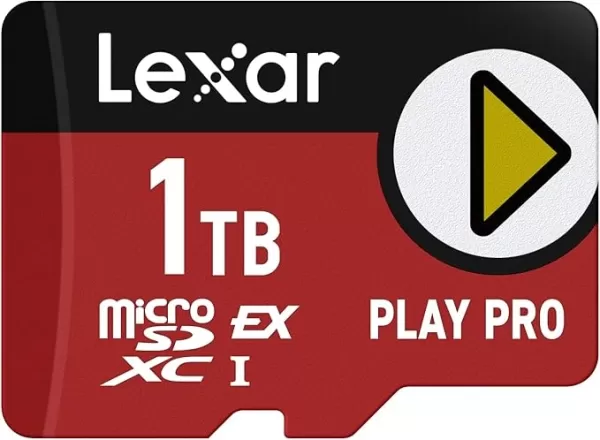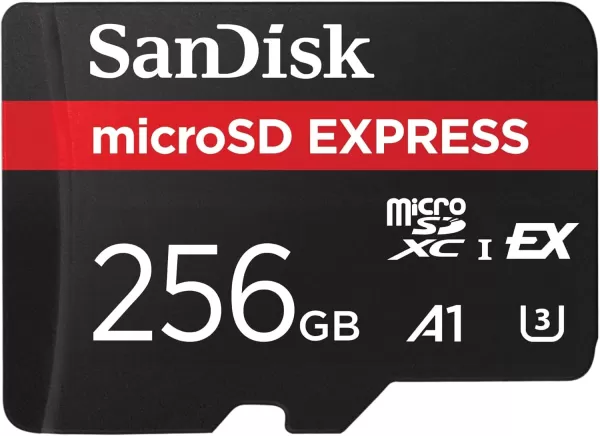Last week, Nintendo unveiled the Nintendo Switch 2, sparking excitement among gamers. However, the announcement came with a significant detail that might cause some frustration: the new console exclusively supports expansion through MicroSD Express cards. While this means you won't be able to use your existing collection of MicroSD cards, there's a compelling reason behind this decision—MicroSD Express cards offer dramatically faster read/write speeds.
These cards leverage a PCIe 3.1 interface, allowing them to match the performance of the UFS (Universal Flash Storage) used in the Switch 2’s internal storage. This compatibility is crucial, as it ensures that games stored on expansion cards load just as quickly as those stored internally. The trade-off? You'll need to invest in the newer, albeit more expensive, MicroSD Express cards.
MicroSD vs. MicroSD Express
Over the years, MicroSD cards have evolved through six different speed ratings. Initially, they offered a modest 12.5MB/s, but advancements led to the introduction of SD High Speed at 25MB/s and eventually SD UHS III at 312MB/s. Five years ago, the SD Association introduced the SD Express standard, significantly boosting performance.
The key difference with SD Express is its use of a PCIe 3.1 interface, unlike the slower UHS-I interface of older cards. This technology, also used in high-performance NVMe SSDs, allows full-sized SD Express cards to achieve data transfer speeds up to 3,940MB/s. While MicroSD Express cards don't reach these peak speeds, they still offer impressive performance, with speeds up to 985MB/s—three times faster than the fastest non-Express MicroSD cards.
Why Does the Switch 2 Require MicroSD Express?
Nintendo's decision to mandate MicroSD Express cards for the Switch 2 is driven by the need for speed. Games installed on a MicroSD Express card will load much faster than on traditional UHS-I MicroSD cards, thanks to the PCIe 3.1 interface. This move aligns with the console's internal storage upgrade to UFS from eMMC, ensuring that expansion storage matches the internal speeds.
Early demos have shown substantial improvements in load times, from a 35% reduction when fast traveling, as reported by Polygon, to a 3x initial load improvement noted by Digital Foundry. While these enhancements may be attributed to the faster internal storage, CPU, and GPU, the need for comparable external storage speeds is clear. This ensures that future games requiring faster disk performance won't be bottlenecked by slower SD cards.
Additionally, the adoption of MicroSD Express cards paves the way for even faster storage options in the future. The current SD 8.0 Specification allows full-sized SD Express cards to reach speeds up to 3,942MB/s. Although MicroSD Express cards can't yet achieve these speeds, future advancements could see them reach similar levels, provided the Switch 2 supports them.
Answer See ResultsMicroSD Express Capacity Options
Currently, MicroSD Express cards are not widely available, but this is expected to change with the launch of the Nintendo Switch 2. Lexar offers a single MicroSD Express card in capacities of 256GB, 512GB, and 1TB, with the 1TB variant priced at $199.

Lexar Play Pro MicroSD Express
0See it at Amazon
SanDisk, on the other hand, lists only one MicroSD Express card on its site, with a maximum capacity of 256GB, which matches the internal storage of the Switch 2. By the time the Nintendo Switch 2 hits the market, we might not see many MicroSD Express cards with capacities exceeding 512GB. However, as demand grows, companies like Samsung are likely to introduce more options.

SanDisk MicroSD Express 256GB
0See it at Amazon

 Latest Downloads
Latest Downloads
 Downlaod
Downlaod




 Top News
Top News








